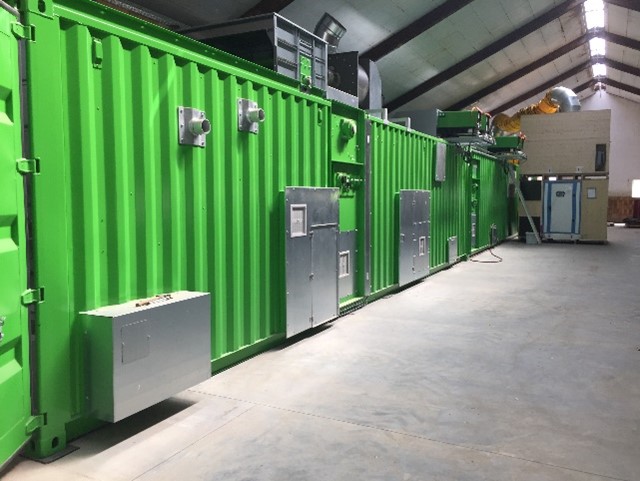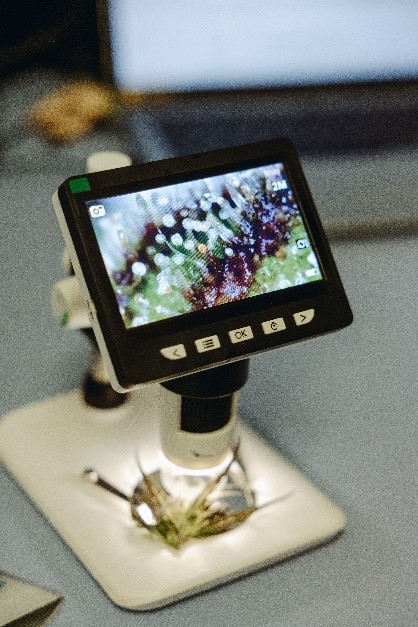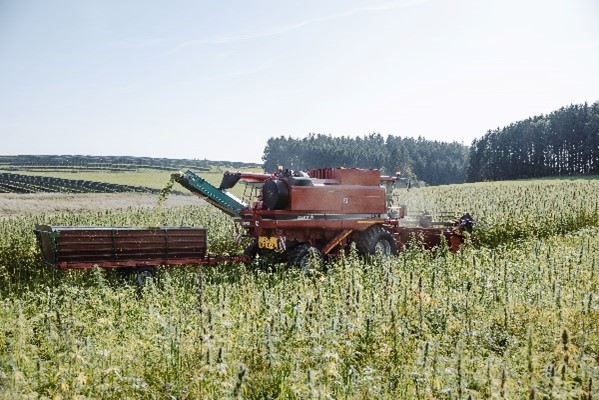What was the challenge/ problem addressed?
The cannabis hemp varieties that are grown in Germany originate from France/Le Mans region. Therefore, the vegetative growth (ripening time) corresponds to this milder climate zone/area. There is a lack of knowledge about the transferability of the growing conditions for the Bavaria/Upper Palatinate region. The hemp harvest product is susceptible to fermentation processes and mold infestation and must be processed immediately or preserved by drying. The drying processes currently used are not suitable for obtaining high-quality, marketable industrial hemp. However, the thermal stability of CBDA and CBD means that not every drying process can be used.
The mechanical influences and the temperature result in high losses of CBDA and CBD. In addition, the high temperatures can lead to the formation of psychoactive substances such as THC. Drying at low temperatures cannot inactivate the enzymes (proteins responsible for converting the cannabinoids into each other). If these proteins remain active during storage, they can lead to the loss of CBD. The tendency of cannabinoids to be oxidized by oxygen as well as the hygroscopic nature of the dried hemp process product pose a challenge to the shelf life of the dried products for the CBD extraction of this plant culture. Therefore, the main aim of the project is to investigate the further processing of the optimized harvested product of the three hemp varieties Fédora, Férimon and Finola and the associated drying process, taking into account the preservation of CBD content and product quality so as to ensure high-priced marketing of the harvested product. This could enable the stabilization and diversification of farms through new sources of income.
How did you solve the problem?
To achieve the project goals, the drying technologies Belt-, cabinet—, climatic cabinet, radio frequency and freeze drying, with and without the influence of electroporation (PEF)-pretreatment to preserve the natural CBD content of the commercial hemp were compared with each other. To determine the natural CBD content, the hemp varieties Fédora 17, Férimon and Futura 75 were analysed, evaluated with the optimal drying process conditions and the storage stability was determined. The established belt drying process and the radio frequency drying, which is cost—intensive to purchase, achieved the best results. PEF pre-treatment partly optimised the process in relation to the drying time. Long—term storage of dried hemp in closed big bags immediately after drying provides stable aW-value and conservation of the CBD content. This makes it possible to market the product all year round without any loss of quality.
What is innovative in your practical case?
The OG set itself the task of comparing different drying technologies with each other and developing an innovative process with process parameters to obtain a high-quality, storage-stable dried product in which the natural CBD content is maximized. The natural CBD content is preserved in the best possible way. The additional use of PEF technology further shorten the drying time. In this way, high-quality agricultural products and foodstuffs can be marketed with high quality and economic benefits for agriculture.
What are the success factors in solving the problem?
By evaluating and optimizing different drying processes with and without PEF pretreatment, the best drying process parameters and PEF settings for preserving the original, natural CBD content of the hemp plant for long-term storage were determined. storage were determined. More attention should be paid to efficiency and resource conservation.
Unexpected fails, if any
The PEF pre-treatment was able to support the drying process at ZweiZehn GmbH Co KG. The lack of implementation in the existing container-2-belt drying system meant that the tasks set could not be carried out in full and therefore the objectives were not fully achieved.
Lessons learned
Drying technologies and drying results play a central role in the project. At Landwirtschaft Adam and ZweiZehn GmbH Co. KG, it was necessary to clarify the crucial system-related issues that precede the drying of hemp, such as large-scale harvesting technology and determining the time of cultivation and harvesting. To this end, the specific harvesting technology and suitable cultivation and harvesting equipment had to be developed. It was important that the plants were protected during harvesting so that their CBD content was preserved.
Radio frequency drying and belt drying at ZweiZehn GmbH Co. KG deliver the comparable results in cannabinoid analysis. The economical use of electrical energy in radio frequency drying is in line with funding policy objectives.
The short drying time is also advantageous. However, the acquisition costs for the radio frequency drying system are high for the individual farmer. By forming agricultural machinery communities/pool, the purchase and use of such systems would be conceivable for each individual farmer.
What role does the advisor or advisory service play within the practical case?
Cordinates the project activities and creating an enabling environment for all project actors. Advisors were to ensure proper knowledge tranfers ,organisation of group trainings,seminars and discover new ideas that could be positive to the project and communicate effectively to all actors and strengthening the in network.
Can your approach be transferred and/or adapted for other innovation challenges and regions?
Yes.
For sharing the experience on the good practice, please contact Christiane Hecht (christiane.hecht@zwei-zehn.com; Phone contact: 0160 959 258 53), Pablo Asensio: Pablo.Asensio@fueak.bayern.de



